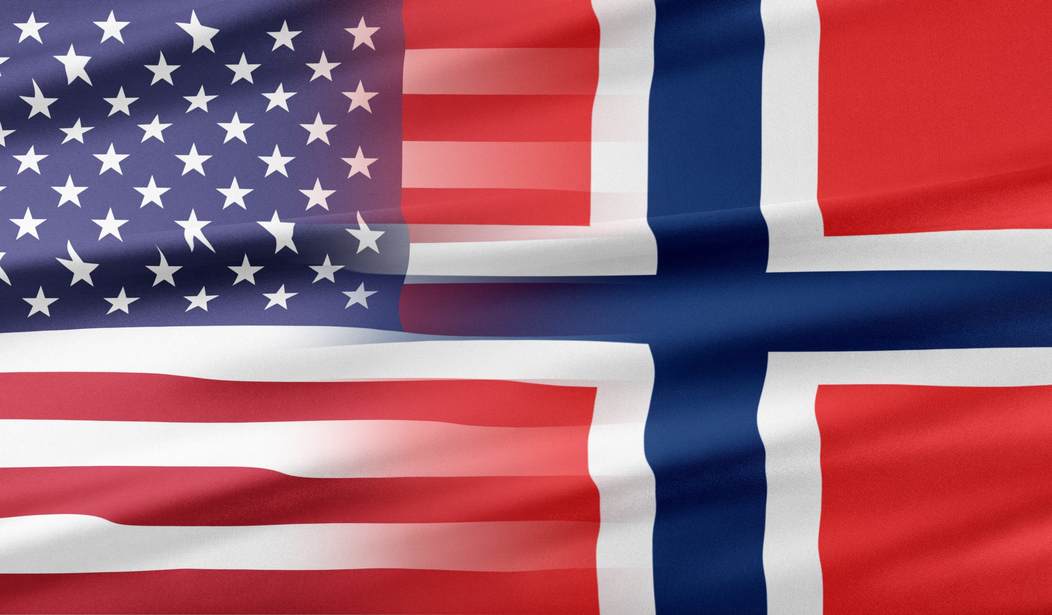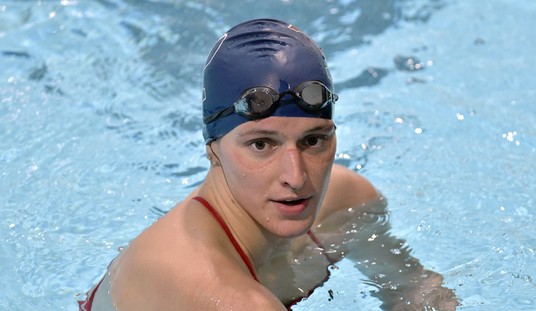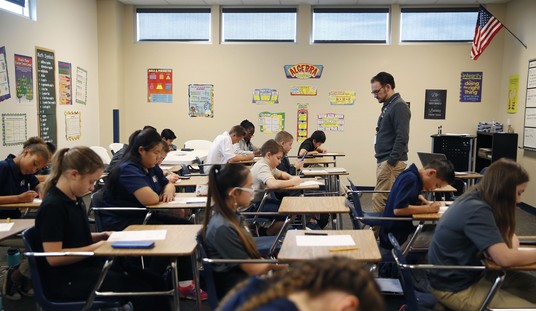I always considered the old U.S. Embassy in Oslo – a forbidding black metal monstrosity that was created by Finnish architect Eero Saarinen, completed in 1959, and almost completely filled a smallish triangular block facing the Royal Palace Park – an eyesore. But back in the day it was a welcoming eyesore, “designed as an open, accessible building featuring both a library and music library where the public could listen to American jazz, for example, and read American magazines, books and newspapers.”
But that was long ago. For obvious reasons, the embassy eventually acquired a high fence, enough armed guards to take over a small country, and security procedures for visitors that put the TSA in the shade. Needless to say, it’s been a very long time since anyone went there to listen to jazz or read Time. But the U.S. government, especially after 9/11, still considered the place too vulnerable: it hadn’t been designed as a fort, and it was too close for comfort to the (very busy) street. Also, the U.S. mission was increasingly in need of more space.
Finally, on May 15 of this year, a new embassy opened in Huseby, on Oslo’s outskirts. A week later, coincidentally, I had to renew my passport. Unfamiliar with the neighborhood, I feared I would have trouble finding it. Au contraire: after I had walked only a few steps from the subway station, there appeared, some distance away, to my left, something so overwhelming that I could not possibly have missed it.
Flying from an extremely tall flagpole, high above everything else in sight, was perhaps the largest American flag I’ve ever seen. The spectacle stirred me – as did the immense (and, to my mind, beautiful) Embassy compound itself, which turned out to consist of several structures, a sprawling lawn separating them from the street, and, of course, the requisite very high, very solid-looking fence.
Not having known how long it would take to get there and being aware that the staff at such institutions don’t appreciate lateness, I arrived at the consular office about a half hour before it opened for the day. Other visitors were early too. It was a voluble prof of about sixty (he reminded me a bit of the late actor Jack Warden) who turned what might have been a quiet, anonymous queue into a boisterous social event, telling us about himself and hammering us – in an exceedingly American, un-Norwegian way – with nosy questions about ourselves. Married to a Norwegian, he’s lived in the country for a decade and spoke the language wretchedly but with zeal.
Also present were a good ol’ boy of about thirty (thick Southern accent, John Deere cap), his pretty Norwegian wife (whom he’d met at the University of Alabama), and their five-year-old son, who was there to get a U.S. passport (and who spoke with his mother in one tongue and with his father in another). The dad said he’d never imagined ending up outside of the South, let alone in Norway – but here he was, in this faraway place, and happy.
Several others joined in the conversation. All of them seemed nice, and all, in their different ways, had one foot in Norway and one in the U.S. There’s something about that shared dual identity that helps forge an instant bond. But I want to mention one person in particular: a gaunt, frail, old Norwegian man who couldn’t speak a word of English, was almost stone deaf, and walked slowly and with apparent pain (but with remarkable dignity). The prof and I managed to get a bit of his story out of him: he’s a dual Norwegian/U.S. citizen and was there at the embassy, as most of us were, to get his U.S. passport renewed.
We asked how it happened that he had a U.S. passport. He explained, simply, that he’d been in “the war.” I could only conclude that he’d done something so heroic that the U.S. had granted him citizenship and Norway (where subjects are rarely permitted to accept citizenship from other countries) had permitted it. That cryptic reference to “the war” was all he would say about the matter, except to add, in a rueful, mumbled wheeze, that if he’d been an immigrant from Pakistan, receiving dual citizenship would’ve been no big deal.
After we’d all been allowed inside and were waiting our turns to carry out our business with a clerk, I reflected that this elderly gentleman was so fragile that it was hard to imagine he’d ever again actually have use for his U.S. passport; in any case, if he were up to international travel, certainly his Norwegian passport would have sufficed. But no: that little blue book obviously meant a great deal to him. He wouldn’t allow it to lapse. He was proud to be Norwegian – and proud, too, to be an American. That pride showed in his garb. It was a hot day, and the rest of us were dressed casually – shorts, T-shirts. Not him: he was elegantly clad in a sharp-looking, freshly ironed gray suit and tie.
The old man had a point about Pakistanis. It is frighteningly easy these days for Muslim immigrants in Europe to acquire passports bearing the names of nations – free countries, democracies – to which they have no sense of loyalty whatsoever, even as they remain citizens of the theocratic tyrannies from which they have supposedly fled (and to which many return regularly to visit their second and third wives, who live in veritable mansions they’ve built with their European welfare benefits).
It shouldn’t work that way. But there is such a thing as authentic – and admirable – affection for a country other than one’s own. It was on display the other day when Donald Trump took his Jewish daughter and son-in-law with him to the Wailing Wall. Their feelings were palpable. They are not Israelis, but their love for, and feeling of connection to, Israel is a real and good thing.
And so, I feel, is my love for Norway. Yes, first and foremost I’m an American. That identity sits too deeply inside me to ever be changed. And I wouldn’t want it to be changed. I feel blessed to have been born in the greatest nation in human history. But I’ve lived half my adult life in Norway. The sight of its people – its overwhelmingly good and decent people – waving their flag unapologetically on May 17 (their Fourth of July), on a continent where the citizens of many other countries consider flag-waving primitive and “nationalistic,” always moves me deeply. (On the morning of this May 17, the first thing I did was to put out our little Norwegian flag on the balcony.) The constantly visible symptoms of this country’s slow destruction – the word that I’m actually thinking as I write this is the more grimly vivid undergang – grieve me in the way that one is grieved at the sight of a loved one slowly succumbing to a fatal disease.
To love at one time more than one of the world’s very few truly good nations, then, is no terrible thing. I never took part in a war, like that splendid old man at the embassy, but just as his wartime effort, whatever it was, served both of the lands whose passports he carries, I try to work in my own small way against despotism and for freedom – and when I do so, I’m fighting as much to preserve the liberty of my two little nephews in Telemark as that of my niece in New York.









Join the conversation as a VIP Member